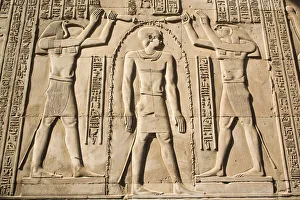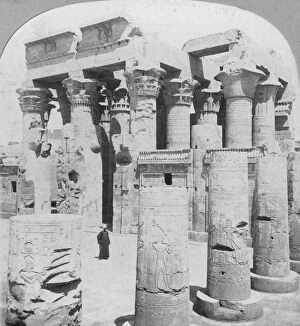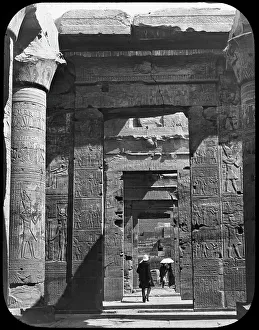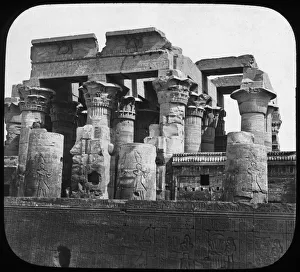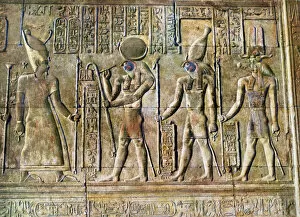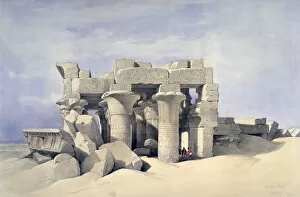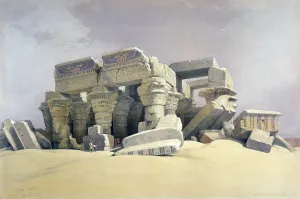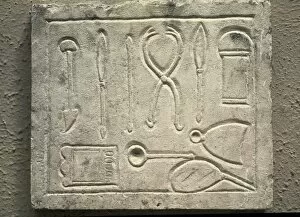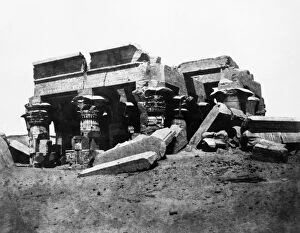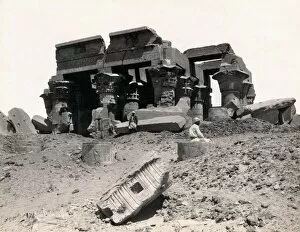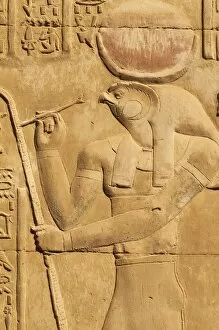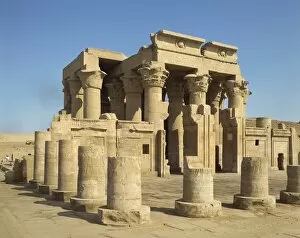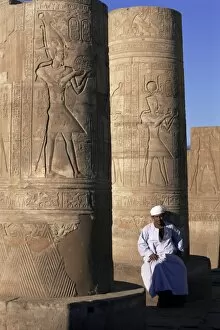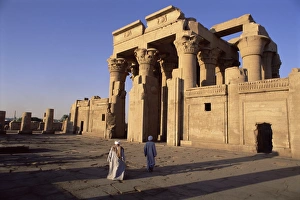Haroeris Collection
"Haroeris: The Divine Triad of Ancient Egypt" In the captivating realm of ancient Egyptian mythology, Haroeris stands tall as one of the revered deities
For sale as Licensed Images
Choose your image, Select your licence and Download the media
"Haroeris: The Divine Triad of Ancient Egypt" In the captivating realm of ancient Egyptian mythology, Haroeris stands tall as one of the revered deities. This magnificent god, depicted on the right side of a mesmerizing wall relief in the Temple of Kom Ombo, Egypt, c1899, exudes power and grace. With Gods Thoth on his left and the Pharaoh at the center, this divine triad symbolizes wisdom, protection, and royal authority. The intricate details captured by The Fine Art Photographers Co in their artwork transport us back to a time when these temples were bustling centers of worship. Newton & Co's stunning photograph from c1890 showcases the grandeur of the temple entrance itself—a gateway into an ancient world steeped in mysticism. Hieroglyphic reliefs adorning the walls tell stories that have withstood centuries—tales woven through symbols and sacred texts. These carvings found within Temple of Kom Ombo are testaments to human devotion and spiritual connection transcending time. David Roberts' artistic renditions from 19th century provide glimpses into ruins that once housed Sobek and Haroeris' majestic temples. Their architectural marvels stood strong for centuries before succumbing to nature's relentless embrace. EGYPT: OMBOS offers us hauntingly beautiful images from c1860—the ruins whispering tales lost to antiquity. The remnants stand as silent witnesses to a glorious past where Sobek and Haroeris reigned supreme over devoted worshippers seeking solace or blessings. As we gaze upon these photographs capturing fragments frozen in time—Ruins of Temple of Kom Ombo—we can't help but feel awe-struck by their magnificence even in decay. These structures built during 2nd-1st century BC continue to inspire wonder today—an enduring testament to human ingenuity and reverence for divinity.

